Finding the right free EQ plugin can be a game-changer when you’re mixing or mastering at home. That’s why I listed some of the top free eq plugins you can get online.
There’s a huge difference between something that just moves frequencies around and a tool that actually helps you shape tone, control dynamics, and bring out the best in a mix. This roundup focuses on free EQs that actually hold their ground against paid options – from warm, analog-style tone shapers like Analog Obsession’s OAQ and Kiive Audio’s Warmy EP1A, to precise digital tools like TDR Nova and iZotope Mastering EQ.
Each one brings something unique to the table: some make your low end bloom, others tame harsh mids, and a few even double as full-blown dynamic processors. Whether you’re polishing a final master, sculpting your drums, or just learning to trust your ears, these EQs give you everything you need to get pro-level results without spending a dime.
Analog Obsession OAQ

I’ve been using Analog Obsession’s OAQ quite a bit lately, and it’s one of those EQs that just feels musical right out of the gate.
The curves are smooth, the saturation has that subtle analog warmth, and it reacts beautifully when you push it – never harsh, just pleasantly colored. I like how it blends a vintage tone-shaping vibe with the flexibility of a modern digital workflow. It’s the kind of EQ that makes you want to trust your ears more than your eyes.
- 6-Band Mastering EQ – Offers precise control with selectable frequency points across six bands, each capable of ±18dB gain, giving you detailed tonal shaping from 20 Hz all the way to 20 kHz.
- Dual-Mono, Stereo, and Mid/Side Modes – Lets you process your mix exactly how you want, whether that’s independent left/right tweaking, full stereo balancing, or mastering-level mid/side sculpting.
- Analog-Style Drive and Oversampling – Add warmth and harmonic richness with the DRIVE control (0-24 dB) and engage 4x oversampling for cleaner, more analog-like saturation when DRIVE is active.
- Smart, Resizable Interface – A simple, resizable GUI (50-200%) that remembers your preferred layout, keeping your workflow clean and flexible no matter your screen setup.
iZotope Mastering EQ
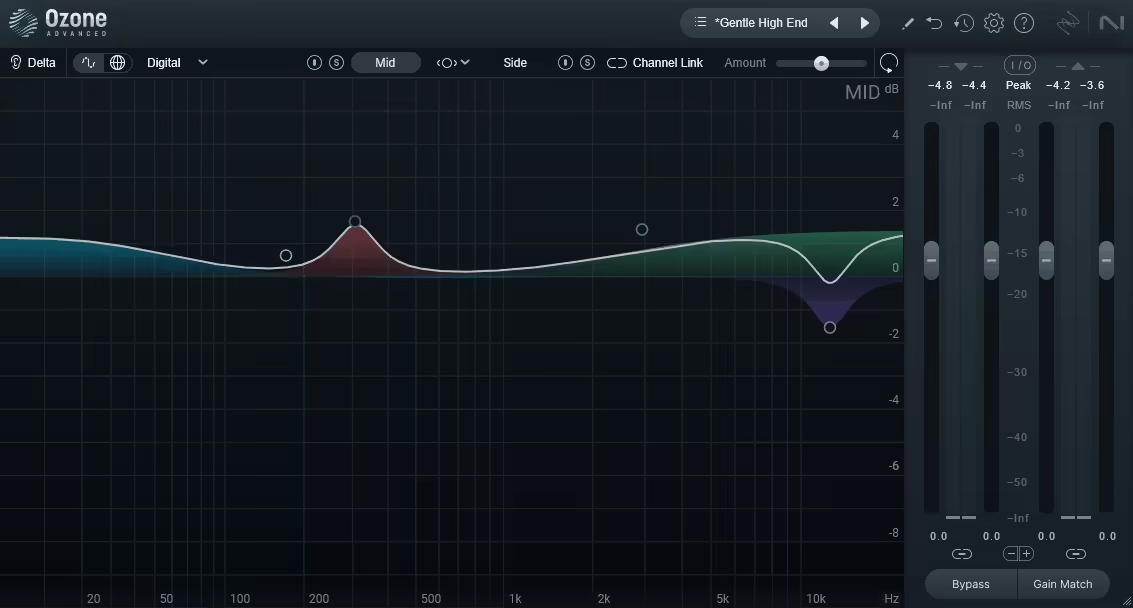
I use iZotope Mastering EQ when I need surgical, transparent EQ moves that won’t color the sound – it’s designed for mastering work, which means the filters are incredibly clean and precise. You get up to 8 bands with high-resolution processing, perfect for subtle adjustments on your master bus or when correcting specific frequency issues without adding unwanted character.
The built-in spectrum analyzer shows exactly where energy is sitting in your mix, making it easy to identify problem areas and make informed decisions rather than guessing.
- Transient/Sustain Mode – Separately process the attack and sustain portions of audio, allowing you to EQ transients independently from the body of the sound
- Delta Button – Solo and hear exactly what frequencies you’re affecting with your EQ adjustments in real-time
- Mid/Side Processing – Shape your stereo image by applying different EQ curves to the center and sides of your mix
- Standalone Plugin from Ozone 12 – Professional mastering-grade EQ extracted from iZotope’s flagship mastering suite, available as a free separate plugin
Soundly Shape It
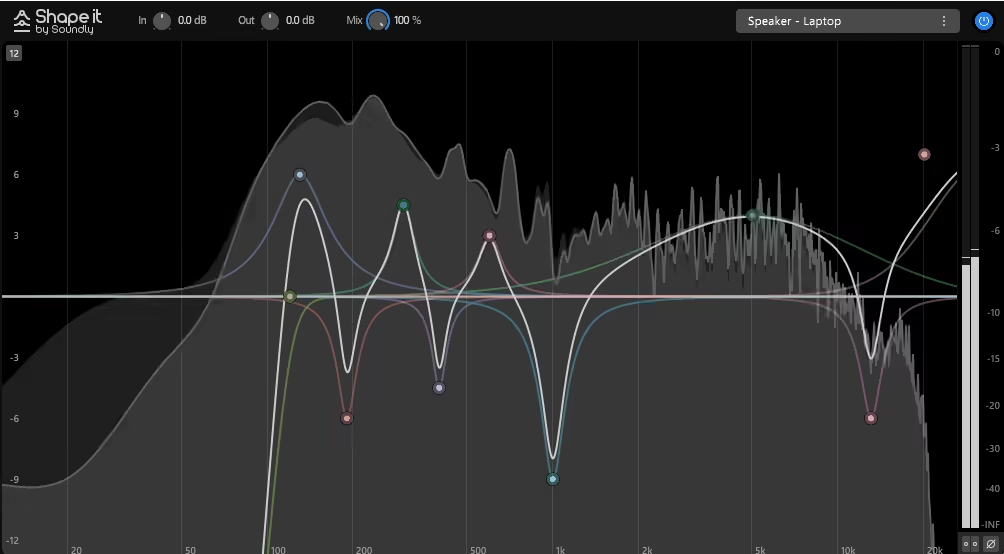
I use Shape It when I need a straightforward parametric EQ that doesn’t waste my time – it’s got 10 bands covering 20 Hz to 24 kHz, and the high-pass and low-pass filters work fast for quick cleanup. Each band lets you adjust frequency, gain, and Q factor, which covers everything from surgical notch cuts to broad tonal shaping.
The mix knob is handy for parallel EQ processing, and there’s a phase flip button for fixing polarity issues when layering sounds, plus some creative presets including a chord mode that can turn any audio into harmonic content.
- 10-Band Parametric EQ – Each band is fully adjustable with frequency (20 Hz to 24 kHz), gain (boost/cut), and bandwidth (Q factor) controls for precise or broad frequency shaping
- Fast High-Pass and Low-Pass Filters – Quick-acting filters designed for rapid workflow when cleaning up low-end rumble or taming harsh highs
- Mix Knob for Parallel Processing – Blend the processed EQ signal with the dry signal for more controlled, natural-sounding adjustments
- Creative Chord Mode – Transforms any audio source into harmonic chord content by manipulating the frequency bands
Acustica Audio Jet
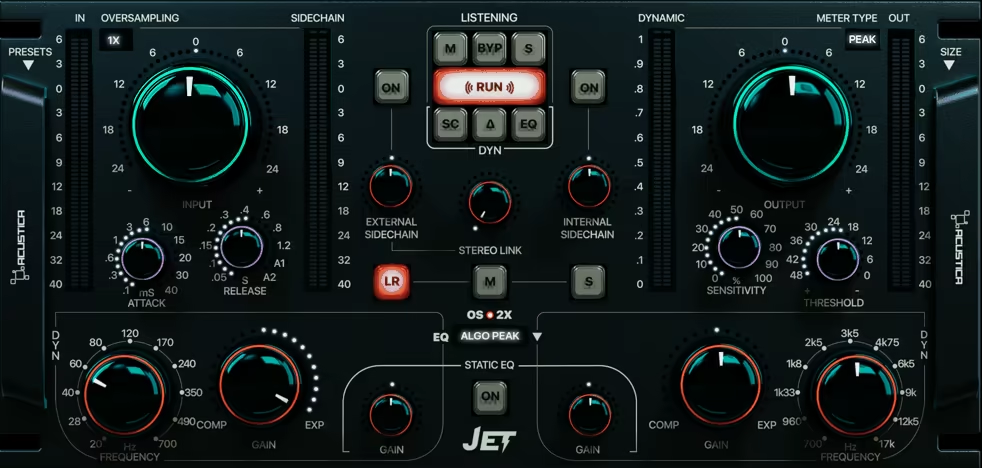
I’ve been using Jet from Acustica as a 2-band dynamic EQ that only processes frequencies when they cross a threshold, which is perfect for controlling problematic low-end buildup or harsh highs without affecting the entire track.
The suite includes two free versions – Jet for bus processing and Jet Mix for individual tracks – with three different EQ models including sampled frequencies from their Eminence plugin (20/40/80/160 Hz low, 7/10/15/20 kHz high) and algorithmic options with more frequency choices spanning 20 Hz to 17 kHz.
It combines analog emulation with digital precision and works in stereo, mid, or side modes, plus there’s a built-in glue compressor that adds cohesion when you need it.
- 2-Band Dynamic EQ with Three EQ Models – Includes one sampled EQ from their Eminence plugin (LF: 20/40/80/160 Hz, HF: 7/10/15/20 kHz) and two algorithmic EQs called Digital Shelf and Digital Shelf HQ 2X with extended frequency options (LF: 20-700 Hz across 11 frequencies, HF: 700 Hz-17 kHz across 11 frequencies)
- Flexible Processing Modes – Operates in three modes (Stereo/LR, Mid, or Side) with both internal and external sidechain options, plus the ability to switch between dynamic and static EQ operation
- Built-In Glue Compressor – Features an integrated bus compressor inspired by elite UK gear for adding cohesion and punch to processed material
Outobugi Toner
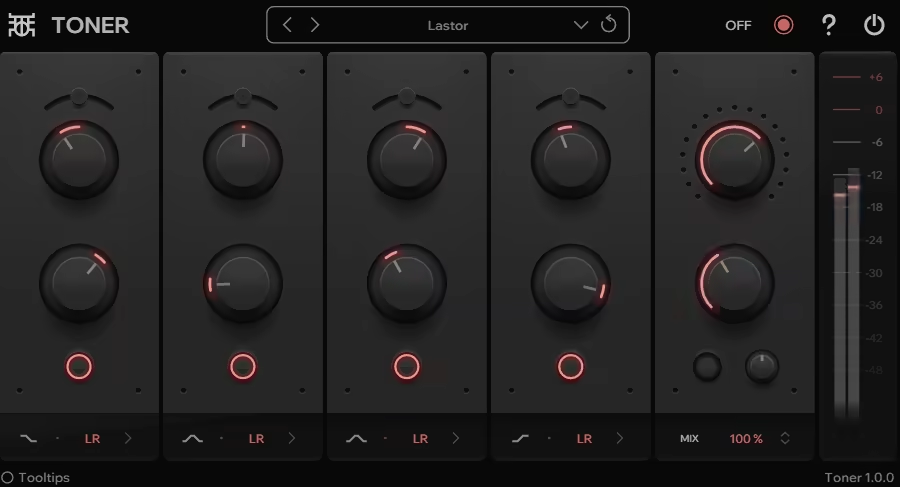
Toner is a four-band EQ with saturation that I reach for when I want to add warmth and character quickly – the low and high bands are shelving filters while the two mid bands are bells, each with frequency, gain, and a balance control for Left/Right or Mid/Side processing.
The saturation knob adds odd harmonics for warmth, and there’s a de-emphasis feature that applies an inverted EQ curve to tame harshness in a musical way. The Delta control subtracts the dry signal from the wet so you can hear exactly what you’re adding, and the mix knob lets you blend the processed signal for more subtle results.
- Four-Band Tone-Shaping EQ – Features two shelving filters (low and high bands) and two bell filters (mid bands), each with frequency, gain, and balance controls that can process in Left/Right or Mid/Side modes
- Odd Harmonic Saturation – Includes a saturation knob that adds warmth by introducing odd harmonics to the signal after the EQ stage
- De-Emphasis (De-EQ) Processing – Applies an inverted EQ setting to reduce harshness and control problematic frequencies in a musical way
- Delta and Mix Controls – Delta function subtracts the dry signal from wet to isolate what’s being added, while the Mix knob blends dry/wet signals with an output gain control for final level adjustment
Analog Obsession HLQSE

HLQSE is a Helios Type 69 style EQ where you can boost and cut bands simultaneously – something the original hardware couldn’t do.
The low section offers a 50 Hz cut up to -15 dB and boost options at 60/100/200/300 Hz up to +15 dB, the mid band has eight selectable frequencies from 0.7 kHz to 6 kHz with ±15 dB range, and the high band centers at 10 kHz with +15 dB boost or -6 dB cut. I use this when I need that British console sound on drums and vocals – it’s musical and forgiving with broad, smooth curves that add character even when making significant moves.
- Three-Band Helios Type 69 Style EQ – Low band with 50 Hz cut (0 to -15 dB) and boost at 60/100/200/300 Hz (0 to +15 dB), mid band with eight frequencies from 0.7 kHz to 6 kHz (±15 dB), and high band at 10 kHz with 0 to +15 dB boost or 0 to -6 dB cut
- Simultaneous Boost and Cut – Allows boosting and cutting within the same frequency bands at the same time, a feature not available on the original hardware
- Oversampling with Visual Indicator – Built-in oversampling that displays a red Analog Obsession logo when engaged, with on-screen notifications for status
- Resizable Interface (50% to 200%) – Touchscreen-compatible GUI that can be resized using the bottom right corner handle, with the ability to save preferred size as default preset
Analog Obsession MAXBAX

Fully passive Baxandall EQ with three bands each with stepped 0.5 dB boost/cut increments that force you to make subtle, musical decisions. MAXBAX works in both stereo (LR) and Mid/Side processing modes with a link button to control left and right channels together, making it particularly useful for mastering or final mix adjustments.
The passive design gives it a gentle, forgiving response that’s hard to mess up, and the 0.5 dB steps keep you from overprocessing – I use it on the master bus when I need transparent tonal shaping without adding unwanted color.
- Three-Band Passive Baxandall EQ with Stepped Increments – Low band (20/30/40/60/85/120 Hz), mid band (0.2/0.4/0.8/2/4/7 kHz), and high band (9/13/16/20/27/40 kHz), all with precise 0.5 dB stepped boost/cut adjustments
- Dual Processing Modes (LR/MS) – Operates in either dual mono/stereo (LR) or Mid/Side processing modes with a link button to control left and right channels together
- Output Control with Fine Adjustment – ±6 dB output gain control with 0.5 dB stepped increments for precise level matching
- Resizable Interface (50% to 200%) – GUI can be resized using bottom right corner handle, with the ability to save preferred size as default preset in your DAW
Analog Obsession BLENDEQ

BLENDEQ is a dual-circuit EQ that lets me blend two different equalizer characters on each of its four bands – “A” for punchy American-style transients and “N” for smooth Non-American character. Each band has its own blend knob so I can mix the two EQ types independently, like adding punchy lows with “A” while keeping silky highs with “N” for maximum flexibility.
The line amp input knob boosts up to +24 dB and blends between the two amp models simultaneously, with HPF and LPF filters placed before the amps to feed them only the usable frequency range you want processed.
- Dual-Circuit 4-Band EQ with Independent Blending – Features two parallel equalizers (“A” American and “N” Non-American) with matched frequencies, where each of the four bands has its own blend knob to mix between the two EQ characters independently
- Dual Line Amp with +24 dB Gain Range – Input knob blends and boosts between “N” line amp (smooth character, left position) and “A” line amp (punchy transients, right position), both offering up to +24 dB of gain
- Pre-EQ Filtering System – HPF and LPF filters positioned before the line amps to feed only the desired frequency range, allowing the amps to process specific bandwidth rather than the full spectrum
- Linked Blend Control Mode – BLENDEQ label button links all blend knobs to the low band’s blend control, enabling quick adjustment of all four bands with a single knob for easy A/N balance across the entire EQ
Samsara Cycle Audio P-T-Q

I recommend P-T-Q plugin primarily on kicks, bass, and full mixes where I want that vintage warmth and presence – the simultaneous boost/cut creates a unique resonant peak that adds weight without mud.
- Classic Pultec-Style Low Frequency Section – Selectable boost and attenuation at 20/30/60/100 Hz with 0 to +10 dB range, allowing simultaneous boost and cut at the same frequency for the classic Pultec low-end enhancement
- High Frequency Boost and Attenuation – Seven selectable frequencies at 3/4/5/8/10/12/16 kHz with 0 to +10 dB boost and attenuation range for precise high-end shaping
- High Shelf Attenuation Control – Dedicated high shelf cut with three selectable frequencies at 5/10/20 kHz for taming harshness and controlling top-end brightness
- 64 Patch Memory with MIDI Learn – Includes 64 patch spaces for saving settings, MIDI learn functionality for hardware control, EQ bypass switch, and gain control for level matching
Analog Obsession & BPB – Rare Program Equalizer
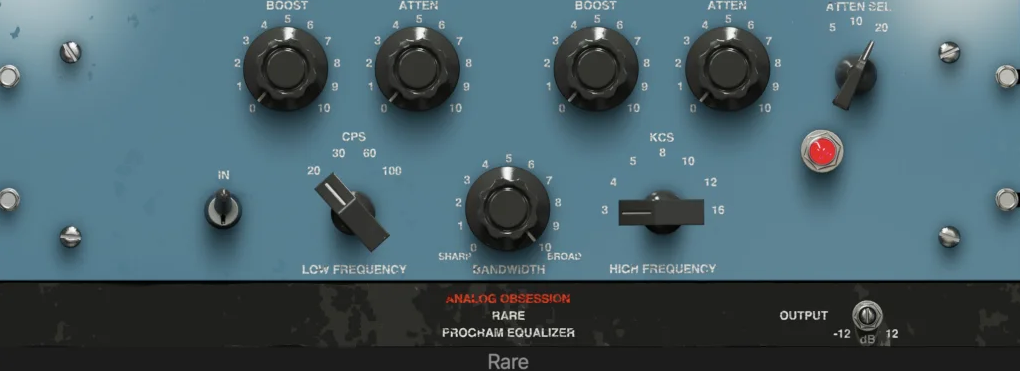
Rare is a Pultec-style passive EQ with two frequency bands that each have separate boost and attenuation controls, plus adjustable frequency range and bandwidth for fine-tuning. Unlike the original hardware, Rare by BPB includes an optional pre-EQ gain stage that lets me saturate the signal before it hits the EQ circuit, adding harmonic warmth when needed.
The oversampling feature (engaged by clicking the Analog Obsession logo) removes aliasing artifacts at a slight CPU cost, making it cleaner for digital processing while maintaining that classic passive EQ character.
- Two-Band Passive Pultec-Style EQ – Features separate boost and attenuation controls for each frequency band with adjustable frequency range and bandwidth parameters for precise tonal shaping
- Pre-EQ Gain Stage with Saturation – Optional gain stage positioned before the EQ circuit that saturates the signal with harmonic content, a feature not available on the original hardware
- Internal Oversampling – Clickable Analog Obsession logo engages oversampling (turns red when active) to eliminate aliasing artifacts during processing, with moderate CPU usage increase
- Independent Frequency Range Control – Dedicated control for the attenuation knob’s frequency range, plus output gain knob and bypass switch for flexible workflow integration
Analog Obsession FIVER

I would recomend you using FIVER from Analog Obsession when I need a straightforward five-band EQ that covers the entire frequency spectrum without getting complicated. The two shelving filters handle the extremes (low: 30-300 Hz, high: 2.5-25 kHz) while the three parametric bands tackle everything in between with continuously variable frequency and bandwidth controls, each offering ±12 dB of boost or cut.
The input drive goes from -24 dB to +24 dB for adding saturation before the EQ hits, and each band has its own bypass so I can quickly A/B my moves without resetting knobs.
- Five-Band EQ with Full Frequency Coverage – Two shelving filters (LF: 30-300 Hz, HF: 2.5-25 kHz) and three parametric bands (LMF: 50-400 Hz, MF: 330 Hz-2.5 kHz, HMF: 2-16 kHz), each with ±12 dB range and continuously variable frequency and bandwidth controls
- Independent Band Bypass Switches – Each of the five bands features its own bypass control for quick A/B comparisons, plus a master bypass for all bands simultaneously
- Compensated Input Drive and Output Trim – Input drive ranging from -24 dB to +24 dB for adding saturation before the EQ circuit, with clean output trim control from -12 dB to +12 dB for gain staging
- 4x Oversampling with Visual Indicator – Clickable Analog Obsession logo engages oversampling (turns red when active) to eliminate aliasing artifacts during processing
Sonimus SonEQ

This plugin is quite a luxurious one considering it’s a free plugin. I’ve had SonEQ on my mix bus for a while now because it’s one of those simple three-band EQs that just adds a nice analog vibe without making me think too hard. It’s got low, mid, and high bands plus high-pass and low-pass filters, and there’s a preamp stage with a bass booster that warms things up before hitting the EQ.
The interface is dead simple, and it runs at zero latency up to 192 kHz, so I can slap it on multiple tracks without worrying about CPU or timing issues.
- Three-Band Analog-Style EQ – Simple low, mid, and high band controls designed for musical tonal shaping with vintage analog character
- High-Pass and Low-Pass Filters – Two musical filters for cleaning up frequency extremes and controlling the overall bandwidth of your signal
- Preamp Stage with Bass Booster – Built-in preamp circuit that adds warmth and analog character before the EQ section, with dedicated bass enhancement
- High-Quality Processing – 64-bit floating point precision with support for up to 192 kHz sample rates and zero latency operation for transparent, artifact-free results
Fuse Audio Labs RS-W2395C
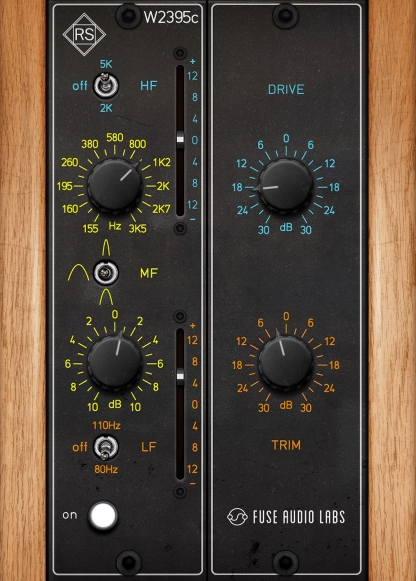
I’ve been using the RS-W2395C when I need to shape the overall vibe of a track without getting into surgical EQ moves – it’s a Baxandall-style EQ that just sounds right. The low band switches between 80 or 110 Hz for controlling sub frequencies, the high shelf goes from 2 to 5 kHz for adding air or taming brightness, and the mid band has three different Q settings so you can go narrow or broad depending on what you’re fixing.
The drive knob is a nice bonus that adds some grit and character, which keeps things from sounding too clean or digital.
- Switchable Low and High Shelving Bands – Low band toggles between 80 Hz or 110 Hz for sub-frequency control, high shelf switches between 2 kHz or 5 kHz for top-end shaping
- Semi-Parametric Mid Band with Three Q Options – Adjustable midrange section offering three different Q factor settings for controlling bandwidth from narrow to broad
- Plugin-Exclusive Drive Control – Adds harmonic saturation and grit to the signal for enhanced analog character and tonal warmth
- Classic Baxandall Design with Interactive Bands – Slightly interactive band behavior provides musical, broad tonal shaping with vintage character developed in cooperation with analog designer Roger Schult
DDMF ColourEQ
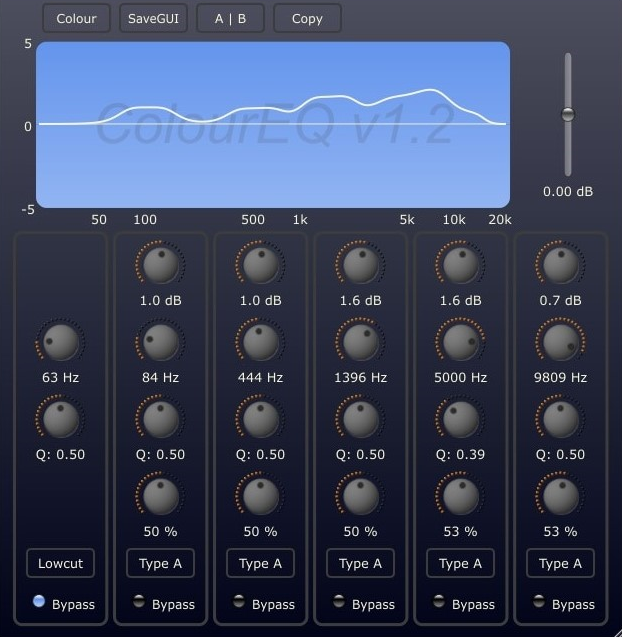
What caught my attention about ColourEQ is that it gives me four controls per band instead of the usual three, which opens up some interesting filter shaping possibilities. The “Type A” mode creates smooth, rounded boosts without harsh edges, while “Type B” gives sharper double-peak filters that can get resonant if you’re not careful.
The bands interact with each other slightly, and the sound has this clean but slightly creamy character that avoids that brittle digital harshness – it’s particularly useful for sound design when I need to sculpt specific tonal shapes that standard parametric EQs can’t quite nail.
- Four Controls Per Band (Super-Parametric Design) – Uses higher-order filtering with four adjustable parameters per band instead of the traditional three, providing additional degrees of freedom for advanced frequency response shaping
- Dual Filter Type Modes – Type A offers smooth, rounded curves without sharp peaks ideal for gentle boosting, while Type B creates double-peak filters with sharp characteristics that can produce resonant effects
- Interactive Band Behavior – Filter bands affect each other’s curves, creating unique EQ responses and a “creamy” timbral character that avoids typical digital harshness
- 64-Bit Processing with Low CPU Usage – Internal 64-bit floating point processing with proprietary C++ coding for efficient performance (1-2% CPU usage), plus resizable GUI with customizable color palettes and auto-scaling curve display
AudioThing Blindfold EQ
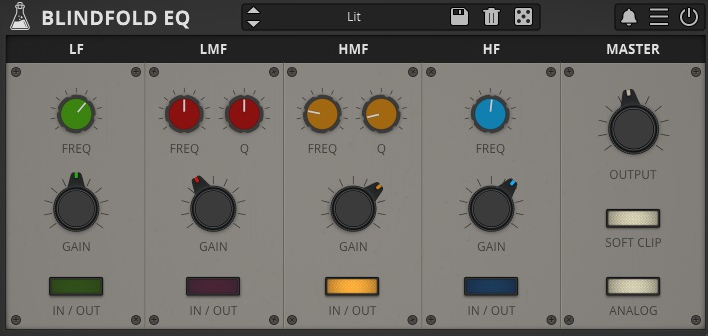
Blindfold EQ does something kind of wild – it hides all the frequency, gain, and Q numbers from you, forcing you to actually use your ears instead of chasing specific frequencies you think you need to boost or cut.
It’s got four bands (low shelf, low mid, high mid, high shelf), but every knob is completely blind with no markings, which sounds annoying until you realize how much faster you make decisions when you’re not overthinking the numbers. I’ve found it genuinely helpful for breaking bad EQ habits, and there’s a randomizer if you want to stumble onto something unexpected.
- Four-Band “Blind” EQ Design – Features low shelf, low mid, high mid, and high shelf bands with completely unmarked controls hiding all frequency, gain, and Q values to encourage ear-based mixing decisions
- Multi-Band Resonant Filter Architecture – Uses resonant filtering for musical EQ curves while forcing users to rely on sonic results rather than visual feedback
- Preset System with Randomizer – Includes preset management and a randomize function for discovering unexpected EQ settings and creative starting points
- Lightweight CPU Usage with Cross–Platform Support – Efficient processing that runs on macOS, Windows, Linux (VST2, VST3, AU, AAX, CLAP), plus iOS/iPadOS (AUv3 and Standalone)
Kiive Audio Warmy EP1A Tube EQ

I’ve always had a soft spot for Pultec-style EQs, and the Warmy EP1A V2.1 nails that classic tone without pretending to be something it’s not. The low-end section gives you that satisfying “push and pull” trick – boosting and cutting the same frequency to get that tight, chest-hitting bass we all chase.
Up top, the highs have that smooth, silky vibe that tames harshness but never dulls the mix. The new tube section is a nice touch too – crank it for subtle saturation or keep it clean for mastering. Simple, musical, and genuinely warm where it counts.
- Classic Pultec-style low-end shaping – The Warmy EP1A V2.1 nails the legendary boost-and-cut trick, letting you thicken up the lows while keeping them tight and controlled. Perfect for bass, kick, or anything that needs that rounded bottom edge.
- Silky high-frequency control – Its high-band section delivers that smooth, musical lift that brightens a mix without harshness. The high attenuation circuit helps tame brittle top-end while keeping the air intact.
- Fully redesigned tube saturation stage – The new THD control gives you precise control over tube coloration, from subtle harmonic lift to rich analog-style warmth that glues tracks together.
- Updated DSP and interface improvements – The entire plugin was rebuilt from the ground up with a new DSP engine and streamlined toolbar, making it sound cleaner, respond faster, and fit seamlessly into modern workflows.
ProduceRNB AMP LEQS
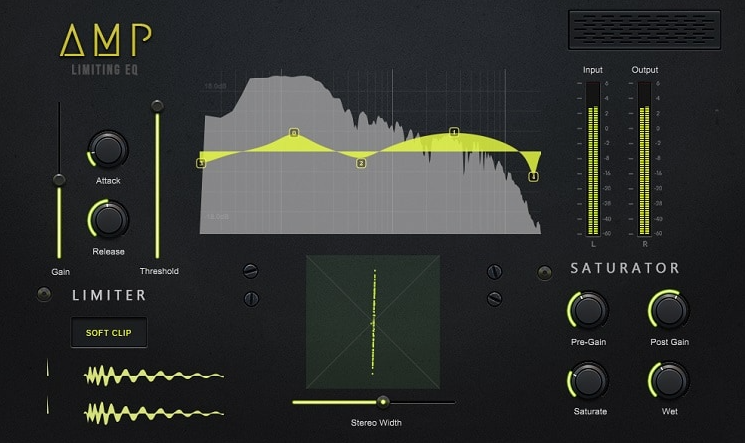
What caught my ear first with AMP LEQS was how it tightens drums without wrecking the transients. It’s more than a clipper – the built-in EQ, limiter, and saturation make it feel like a tiny channel strip for quick mix fixes.
The soft clipping smooths peaks while keeping everything punchy and loud, which is perfect when you want drums or synths to hit harder without extra plugins. It’s one of those tools that quietly earns trust after a few sessions.
- Multi-effect design – AMP LEQS isn’t just a soft clipper; it combines EQ, limiter, saturation, and stereo widening into a single unit, giving you full tone-shaping and loudness control without stacking multiple plugins.
- Soft clipping and limiting – The soft clipper rounds off transients smoothly, boosting perceived loudness without introducing harsh distortion, making it ideal for drums and other punchy elements.
- Built-in EQ and saturation – Its EQ helps sculpt tone before or after clipping, while the saturation stage adds warmth and harmonic depth that enhances presence and weight in a mix.
- Designed for punchy drum enhancement – Created by Produce-RNB specifically to make drum sounds more impactful and mix-ready, AMP LEQS quickly adds power and clarity without overprocessing or digital clipping.
Ignite Amps PTEq-X
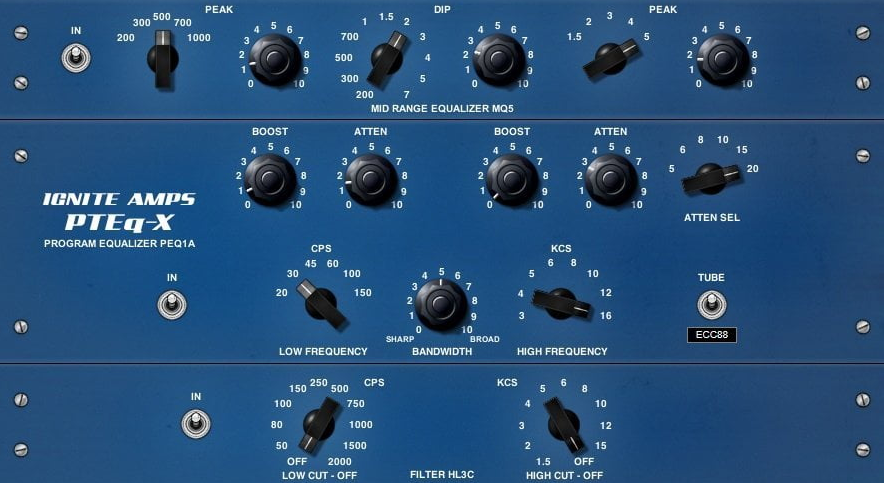
PTEq-X accurately recreates three legendary passive equalizers (PEQ1A, MQ5, and H3C), each with fully analog-style curves that stay smooth and musical even in the high end.
- Advanced tube stage modeling – Uses Ignite Amps’ third-generation triode simulation with four selectable tube types, letting you dial in different shades of warmth and harmonic richness.
- Enhanced flexibility beyond the originals – Adds extra frequency points on the PEQ1A and improved filter accuracy on the MQ5 and H3C, giving you more precise control than vintage hardware ever allowed.
- Modern workflow options – Includes switchable oversampling to reduce aliasing, CPU-friendly bypass options for unused stages, full automation support, and both mono and stereo processing.
TDR Nova Parallel Dynamic Equalizer
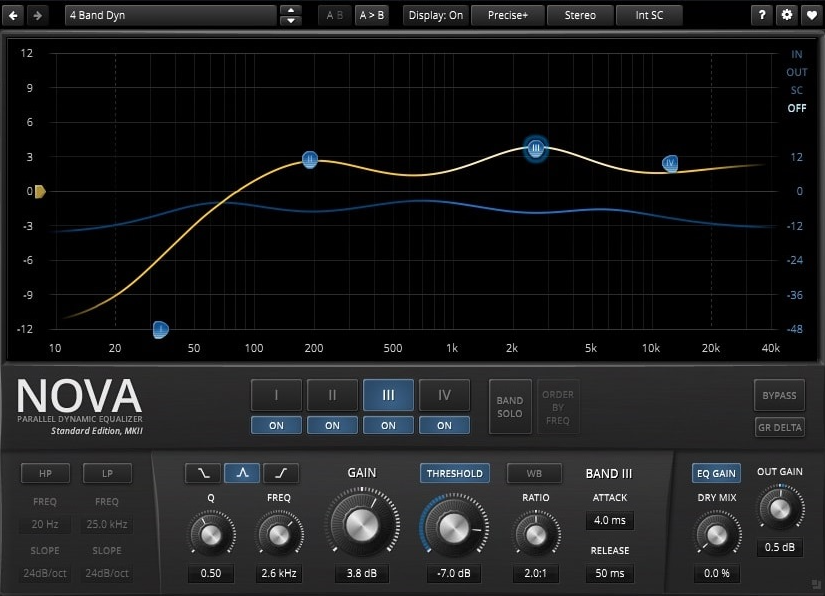
What makes TDR Nova stand out to me is how quickly it shifts from a simple EQ to a full dynamic processor without ever feeling complicated. Each band can react to the signal in real time, so you can control harshness, add punch, or tighten the mix without stacking multiple plugins.
The visual interface helps you actually see what you’re doing, which is great for dialing things in fast. It’s one of those plugins I keep reaching for when I need control and clarity without overthinking the process.
- Four fully dynamic EQ bands give TDR Nova the ability to act as both a standard parametric EQ and a responsive dynamics processor, reacting to incoming audio in real time for precise control.
- Parallel dynamic processing lets each band compress or expand independently, making it perfect for de-essing, tightening low-end, or adding density to a master without affecting the rest of the mix.
- Built-in spectrum analyzer and equal loudness function provide clear visual feedback and consistent monitoring, helping you make accurate EQ moves without being fooled by volume changes.
- Additional high-pass and low-pass filters expand its flexibility, allowing Nova to function as a surgical tone shaper or a subtle mastering tool depending on the situation.
Bonus: Melda MEqualizer
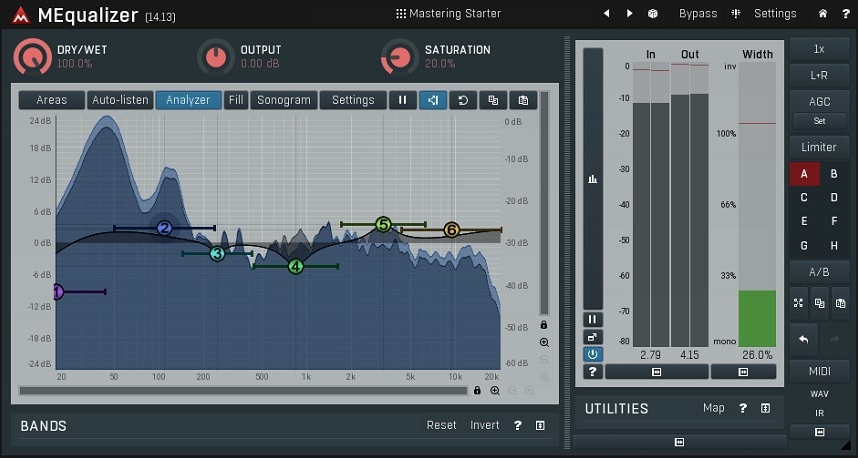
I didn’t expect MEqualizer to be this versatile when I first loaded it up. It’s got six fully adjustable bands, each with several filter types, so dialing in tone feels quick and deliberate. The tube saturation is what really sells it though, giving mixes that gentle analog edge without mudding things up.
Add in the built-in spectrum and sonogram views, and it becomes one of those EQs that’s just easy to trust while you work.
- Six-band parametric EQ with seven filter types gives MEqualizer a wide range of tonal control, from steep 60 dB per octave low-pass filters to natural-sounding 6 dB single-pole options, perfect for both surgical and musical EQ work.
- Integrated tube saturation and harmonic control let you add warmth, drive, and even harmonic layering per band, allowing detailed analog-style coloration or creative tone shaping.
- Auto-Listen feature makes frequency adjustments faster and safer by soloing the specific range you’re tweaking, helping you find problem areas without harsh frequency sweeps.
- Visual “Areas” labels and custom spectrum tools improve workflow by marking common instrument zones across the frequency range, while the spectrum and sonogram displays give precise visual feedback for critical EQ moves.
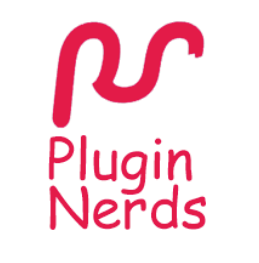
We are plugin nerds (just like you!). We made this website to keep you updated on the latest trends, news and everything plugin related.

